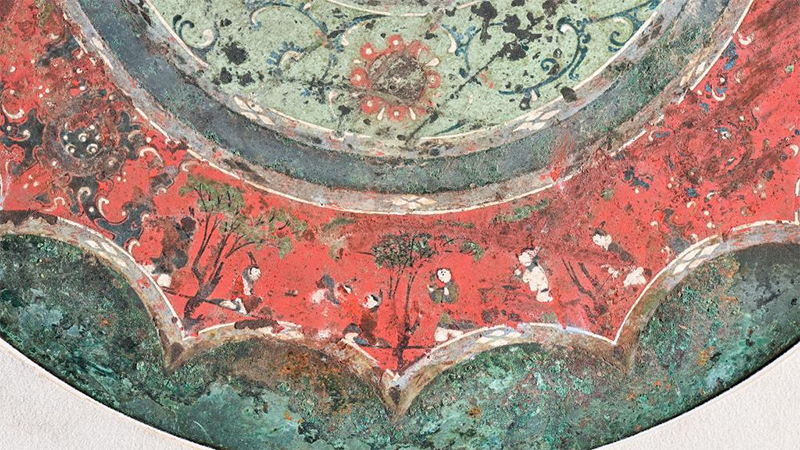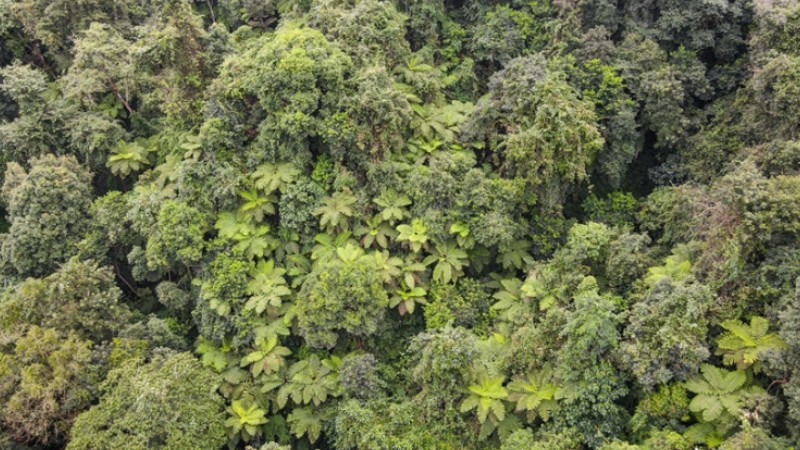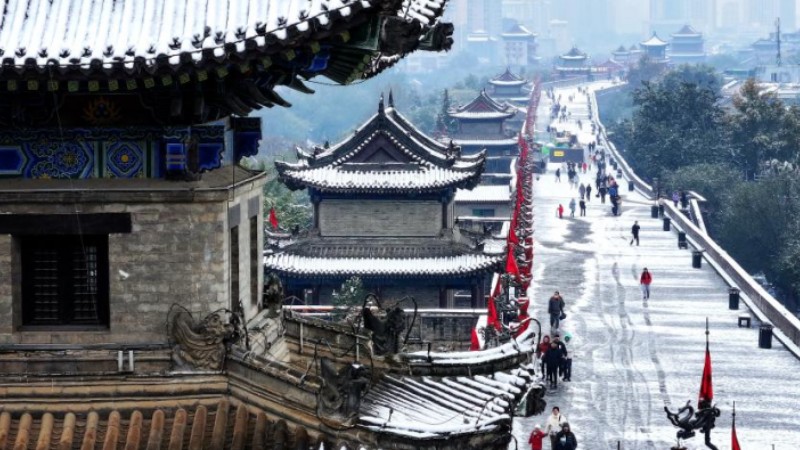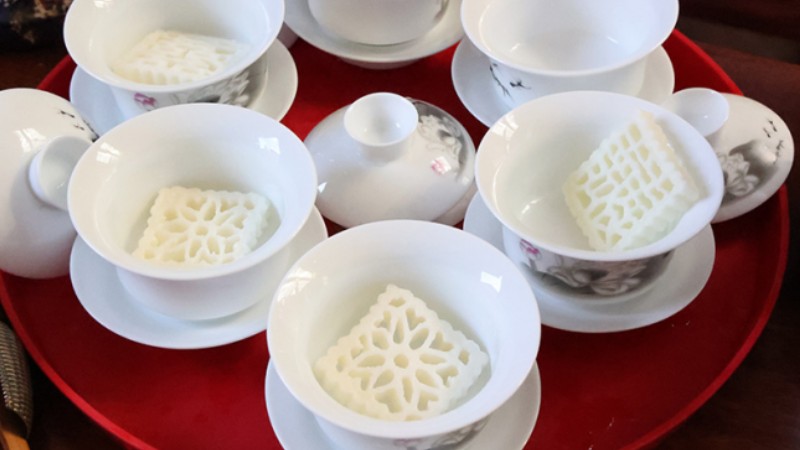Tibetan festival celebrated at foot of "China's most beautiful peak"
LHASA, Nov. 15 (Xinhua) -- At 6 a.m. before the dawn broke, Lhapa Drolma, donning a beautiful Tibetan costume, started distilling highland barley liquor and making tsampa, a traditional food made of roasted barley flour.
As a festival tradition, the 38-year-old spared some tsampa, yak milk, beef and other food to feed dogs. "The dog drank the milk first, which is an auspicious sign indicating that we will have a good harvest of yak milk in the coming year," she said with a smile, explaining the customs to the tourists curiously watching.
Lhapa Drolma, who runs a homestay, hails from a small village located at the foot of Mount Namcha Barwa in the city of Nyingchi in southwest China's Xizang Autonomous Region.
Tuesday marked the first day of the Kongpo New Year according to the Tibetan calendar, the most important traditional festival in the Nyingchi area. As locals in the city are on a three-day holiday starting on Monday, tourists are also flowing in to experience the festive atmosphere and enjoy the breathtaking scenic view.
Mount Namcha Barwa, also spelled Namjagbarwa, was listed at the top among China's most beautiful peaks by the Chinese National Geography magazine in 2005. Part of the Himalayas, Mount Namcha Barwa is an ideal destination for tourists looking to savor the beauty of nature. The burgeoning local tourism industry has benefitted locals like Lhapa Drolma.
In the past, Lhapa Drolma relied on collecting matsutake mushrooms for a living. Not only the work was extremely tiring as she had to hike to altitudes of over 4,500 meters, but she could barely make ends meet with the income.
Things started to change in 2013 when Lhapa Drolma transformed part of her home into a guesthouse to supplement the family income as she smelled business opportunities from the increasing number of visitors coming to enjoy Mount Namcha Barwa.
Over the past decade, the guesthouse has expanded from merely eight beds to two buildings with over 50 rooms, with her family's annual income exceeding 1 million yuan (about 140,000 U.S. dollars) now.
"While childhood seldom granted the luxury of a hearty meal or new garments, new clothes and delectable treats are at our fingertips today," she said.
A tourist surnamed Wu drove from northwest China's Ningxia Hui Autonomous Region to the region for vacation, with Nyingchi being his first stop. He chose to stay at Lhapa Drolma's homestay as the view was magnificent.
"When I woke up in the morning, I could see Mount Namcha Barwa right through my window," said Wu, showing the photos of the sun-kissed peak he had captured the previous day on his phone.
With the beautiful peach flowers and greenery in spring and summer, and the snowy peak at the backdrop in fall and winter, the village has attracted visitors all year long.
The booming tourism has greatly stimulated the village's homestay business and the number of guesthouses has surged from two to 41 with 1,600 beds in total, said Cering Norbu, head of the villagers' committee.
In 2022, the per capita disposable income of the village exceeded 31,000 yuan. Living a prosperous life, Lhapa Drolma can now realize her dream of traveling.
"I've never seen the sea, so I plan to go to the beach in the city of Sanya next year with my family to celebrate the Kongpo New Year," she said.?
Photos
Related Stories
- 19th China Wuqiao International Circus Festival closes
- Culture Fact: Double Ninth Festival
- Enjoy beautiful autumn scenery in Beijing on Double Ninth Festival
- Folk festival held to celebrate harvest in Guangxi
- Pumpkin festival held in Vladivostok, Russia
- Dazzling lanterns light up Victoria Park in Hong Kong
- Teej Festival celebrated in Kathmandu, Nepal
- BD Comic Strip Festival held in Brussels
- Museum in Nanjing showcases charm of traditional Qixi culture
- Folk activity of intangible cultural heritage held to mark Qixi Festival
Copyright © 2023 People's Daily Online. All Rights Reserved.









